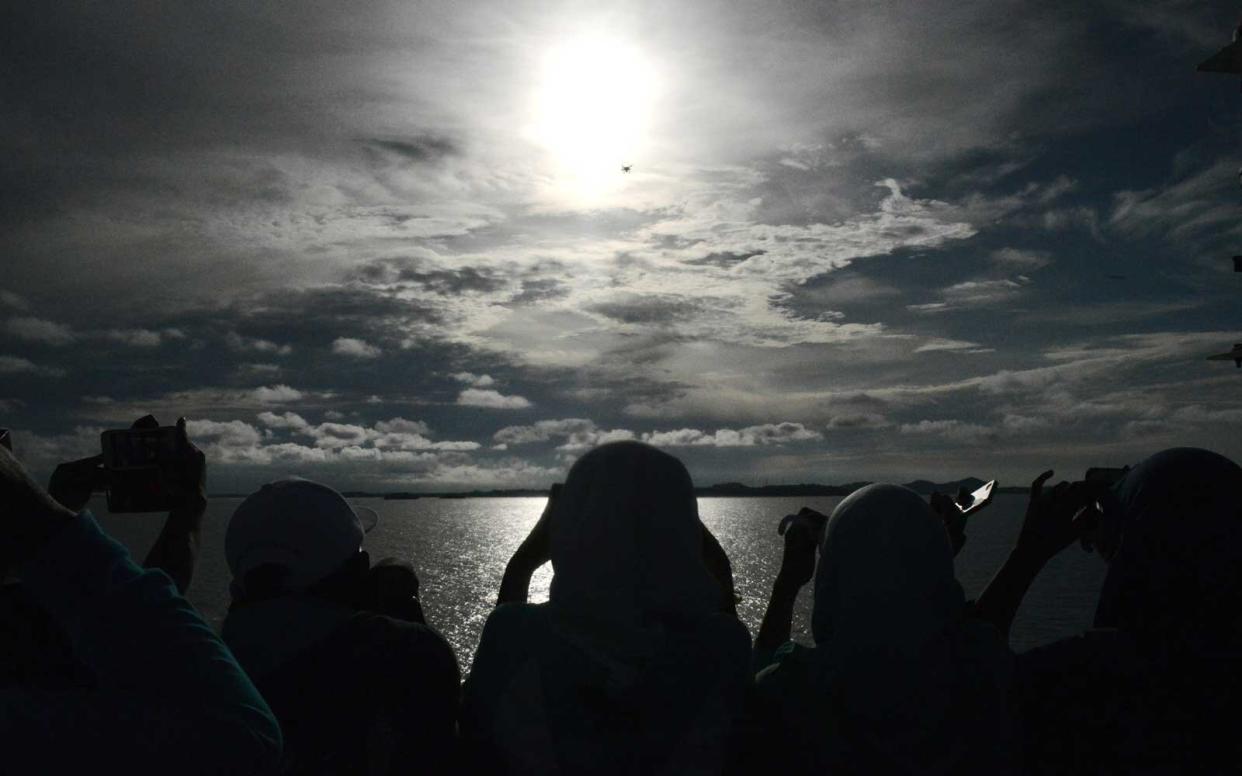Here's What the Total Solar Eclipse Will Look Like From Where You Live

GOH CHAI HIN/AFP/Getty Images
On August 21, a much-anticipated total solar eclipse will cross the United States, from Oregon to South Carolina.
Although the eclipse’s path of totality — where the moon will completely block the sun for about two minutes — is only about 70 miles wide, the entire country will be able to catch at least a partial eclipse. The last time a total solar eclipse cut across the whole contiguous country was in 1918, according to NASA.
Related: 25 Perfect Spots for Watching the Total Solar Eclipse Crossing the U.S.
For those debating whether or not the eclipse will be worth the trek, there are several different ways to visualize exactly what the eclipse will look like in different parts of the country: Timeanddate.com has a tool that shows what the eclipse will look like from different cities as well as the exact times of the eclipse including totality, and Vox has an eclipse tool that allows users to input their zip code and find out the exact time the eclipse will peak in their neighborhood and what it will look like.
And everyone heading out to catch a view of the eclipse should proceed with caution: It’s unsafe to look directly at the sun during an eclipse (except during totality). NASA recommends buying a pair of certified eclipse glasses or looking at the eclipse through projectors and filters.
Hotels and resorts around the country are hosting a number of eclipse-themed events for the occasion. However those who want to travel for the eclipse but haven’t yet made reservations should do so soon — many hotels are already completely booked for the event. And for those dissatisfied with their zipcode’s view, NASA will be livestreaming the eclipse from 57 high-altitude balloons around the country.

